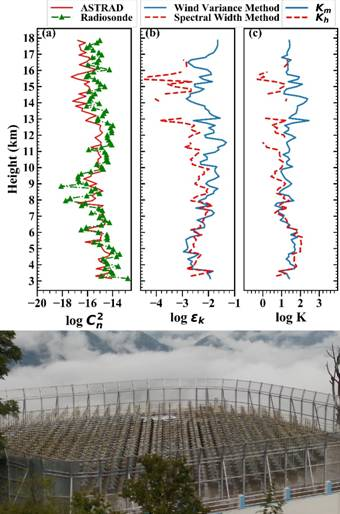Scientists at the Aryabhatta Research Institute of Observational Sciences (ARIES), an autonomous institute under @IndiaDST estimated turbulence parameters in the lower troposphere over the central #Himalayan region for the first time 

The researchers have calculated the magnitude of refractive index structure (Cn2), a constant that represents the strength of the atmospheric turbulence using observation from their #Stratosphere #Troposphere #Radar (S T Radar)
Proper and timely information of the higher values of the atmospheric turbulence parameters and understanding of time and space distribution of turbulence structure in the #Troposphere could help improve performance of numerical #weather prediction and climate models 

• • •
Missing some Tweet in this thread? You can try to
force a refresh




















